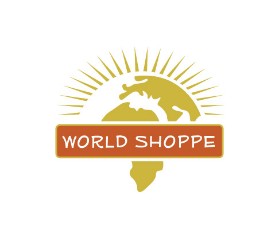Beginning April 21st, just in time for Earth Day, the Sundance Channel began an in-depth exploration of the origins and environmental impact of common everyday products in a new and enlightening eight-part original series, “Eco Trip: The Real Cost of Living.” Hosted by eco-adventurer David de Rothschild, whose far-flung travels have garnered international attention, the half-hour primetime program (airing Mondays at 9: 00pm e/p) investigates iconic items from cotton t-shirts and paper napkins to salmon and cell phones, and follows their life cycle from production to disposal, revealing the environmental, social and health effects along the way. The series, which inspires and educates viewers on what they can do to live a greener life, will air as part of The GREEN, Sundance Channel’s weekly destination for environmental programming.
David de Rothschild is the author of “The Live Earth Global Warming Survival Handbook” and founder of Adventure Ecology—an organization that uses adventure and storytelling to captivate the imagination, raise global mass media awareness and inspire individuals, communities and industry to take smart actions for our planet. In 2009, he will embark upon the Plastiki Expedition, traveling from San Francisco to Australia aboard a vessel made almost entirely of recycled plastic water bottles. In doing so, he hopes not only to draw attention to the wonders that can be created from recycled materials but also to the dangers, in the forms of garbage and waste, facing our oceans. Like “Eco-Trip: The Real Cost of Living”, The Plastiki aims to combat the environmental threats that un-recycled waste pose to our planet.
“’Eco Trip: The Real Cost of Living’ is very near to my heart,” de Rothschild said. “It’s a show that teaches viewers something they didn’t know or understand before they tuned in without making them feel that incredible sense of guilt because they haven’t yet saved the world. Our hope is that audiences will gain a better understanding of the what goes into manufacturing these very familiar products; how disposing of products responsibly can impact our environment in a positive way; and to send a message that says every single person’s contribution to making the world better can truly make a difference.”
Here are the episode descriptions if you're interested in seeing them! (PS - I included the one that passed on chocolate because I wanted to share the description...maybe Sundance will repeat the episode or it can be viewed online...)
Episode 1 - Chocolate – Tuesday April 21, 9pm e/p
Three and half million tons of chocolate are produced worldwide annually, and most processed chocolate candy is actually made up mostly of sugar. Grown conventionally, cocoa beans and sugarcane are highly damaging to the environment and biodiversity. In this episode, David embarks on a bean-to-bar journey that takes him from an organic cocoa farm in the Dominican Republic to the Everglades in southern Florida, an organic dairy farm in New York, and a chocolate factory in Chicago. As he learns about the true cost of conventional chocolate, David also gets to take part in making organic chocolate, an increasingly popular alternative -- one that is both delicious and healthy.
Episode 2 - Cotton T-shirt – Tuesday April 28, 9pm e/p
Conventional cotton farming uses more water, synthetic chemicals and hazardous pesticides – including known carcinogens -- than almost any other crop on earth. But we don’t only wear cotton, sleep on it and dry off with it: 70% of a cotton harvest makes its way into our food supply via livestock and cottonseed oil. Which raises the question: if cotton is everywhere, are its toxins, too? In this episode, David explores the long, chemically enhanced road traveled by an ordinary cotton T-shirt, from farm to cotton gin to overseas weaving, dying and manufacture. David’s own journey begins with a lesson in organic cotton farming, and continues with an eye-opening visit with a scientist studying the impact of pesticides on workers, the earth and all of us. Concluding his tour in New York City, David goes shopping for a healthier T-shirt.
Episode 3 - Gold Ring – Tuesday May 5, 9pm e/p
The U.S. is one of the world’s largest producers and consumers of gold; our annual retail market for gold is 19 billion dollars, and most of those dollars go to jewelry. However, the common mining practices behind a pretty gold ring can leave an ugly mess behind: blasted earth, fouled air and waterways polluted with toxic materials like arsenic, mercury, sulfuric acid, lead, copper and zinc. In this episode, David travels to Nevada, where he gets a bird’s eye view of the devastated landscape. He learns about the movement among retailers and jewelers to renounce so-called “dirty gold,” and visits a veteran jewelry designer in Oregon, where he tries his hand at making the most eco-friendly jewelry of all, from recycled and reclaimed gold.
Episode 4 - Paper Napkin – Tuesday May 12, 9pm e/p
The U.S. is the world’s largest producer and user of paper products, topping out at 84 million tons annually; every U.S. resident goes through an average of 50 pounds of disposable tissue products every year. More than half of all wood logged for paper comes from old growth forests or virgin pulp – resources that would otherwise nurture vital ecosystems and absorb the carbon dioxide that causes global warming. In this episode, David takes the paper napkin -- staple of coffee shops and food venders -- and follows its life cycle from forest to paper mill to landfill. The costs of that throwaway napkin quickly adds up - in terms of forest destruction, air and water pollution and endangered human health. However, David finds that there are more sustainable ways to log and process paper products, and learns how a used napkin can be put to very good use.
Episode 5 - Light Bulb – Tuesday May 19, 9pm e/p
It has been widely reported that if every American household replaced one incandescent light bulb for a compact fluorescent (CFL) bulb, it would save enough energy to power 3 million homes, while lowering electric bills and combating global warming. Can one light bulb really make a difference? In this episode, David looks at Thomas Edison’s bright idea, following the light bulb past the socket and onto the electric grid. Half of America’s electricity is sourced from coal, and on a visit to Appalachia, David is shown the devastating impact of mountaintop removal, now the preferred method of coal mining in the U.S. In Arizona, David checks out the latest innovations in solar energy technology, before heading back to the East Coast for a look into the future of light bulbs.
Episode 6 - Bottled Water – Tuesday May 26, 9pm e/p
The U.S. market for bottled water is the largest in the world, with sales up over 170% in the past decade. But where does this water come from, and is it actually better – or much different – than tap? And what are the unseen costs of retail water to the environment and wildlife, and to our health and even our economy? In California, David tests the local tap water in more ways than one, and discovers how plastic bottles – some 98 million are discarded daily – wreak havoc on the health of oceans and marine life, and even make their way into the food chain. On the banks of the muddy Missouri River, David learns about a new option for communities that don’t have access to a pristine water source.
Episode 7 - Cell phone – Tuesday June 2, 9pm e/p
Cell phones are purchased and discarded by the millions every year: 1 billion sold worldwide; 130 million thrown away, with most of the castoffs ending up in the landfill or the incinerator. In this episode, David tracks the raw materials necessary for cell phone manufacturing, including oil, metals and the mineral coltan; tracing the path of coltan, David finds himself at the Bronx Zoo, home of an endangered African gorilla. In California’s Silicon Valley, the high-tech birthplace of cell phone technology, David learns that the hazardous legacy of e-technology lives on underground. In Mt. Vernon, New York, David joins the assembly line at We Recycle, part of a growing industry seeking to halt the toxic stream of e-waste.
Episode 8 - Salmon – Tuesday June 9, 9pm e/p
Salmon consumption in the U.S. has more than doubled in the past 15 years, an increase made possible in large part by the rise of commercial salmon farming. Meanwhile, wild salmon populations are at historic lows on both coasts of the U.S., and wild Atlantic salmon is commercially extinct. At this point, 90% of the salmon consumed by Americans is farm-grown. But is salmon farming truly sustainable, and are the domesticated stocks relieving pressure on their wild brethren or adding to it? In this episode, David wades into the complicated issues surrounding this culinary favorite, including the pro and con arguments surrounding salmon farming.
Happy watching!
-Megy Karydes, Founder
www.World-Shoppe.com
Thursday, April 23, 2009
Monday, April 06, 2009
55,000 Strong for World Fair Trade Day, 2009
The Fair Trade Resource Network is on a mission to find Americans, 55,000 to be exact, to take a fair trade break on May 9 of this year. A day before Mother's Day in the United States, the non-profit organization wants us to join hands with our international neighbors to celebrate fair trade.
A lofty goal, yes. But Finland hit over 50,000 just last October. Can Americans do it? Absolutely!
Share this video with your friends: http://tinyurl.com/d79xtn, plan and then post your event on the organization's Web site: www.FTRN.org.
Together we can make a difference! I hope you'll join me and your fellow Americans as we show the world that everything is better when it's fair trade!
-Megy Karydes, Founder
www.World-Shoppe.com
A lofty goal, yes. But Finland hit over 50,000 just last October. Can Americans do it? Absolutely!
Share this video with your friends: http://tinyurl.com/d79xtn, plan and then post your event on the organization's Web site: www.FTRN.org.
Together we can make a difference! I hope you'll join me and your fellow Americans as we show the world that everything is better when it's fair trade!
-Megy Karydes, Founder
www.World-Shoppe.com
New Shipments Arriving This Week from India, Kenya, Bangladesh

http://www.world-shoppe.com/ has been busy busy busy. Sadly, we didn't get our March e-newsletter out because we've been busy finalizing some of our orders with our partners.
Happily, though, we're getting a TON of shipments this month and the fair trade gifts and home accents include jewelry such as necklaces, bracelets and earrings from India and Nepal; kitchen and garden accessories from Bangladesh, the Philippines, India and Kenya; Prayer Flags from Tibet; a gorgeous set of bathroom accessories from India (we're really excited about this set because there aren't a lot of groups that produce bathroom accessories - we've included a sneak peak with this blog post!); and so much more.
We're making room in our storage space to accept all of the packages so once they arrive, we'll photograph them and post them on the site as soon as we can.
In the meantime, please visit our Web site, http://www.world-shoppe.com/, and share the site with your friends and family! The more we share the news of fair trade, the better it is for our earth and our artisan neighbors all over the world.
Thank you so much for your amazing support. I've said it before but I'll say it again - we couldn't do this work without you and for that we're eternally grateful!
-Megy Karydes, Founder
http://www.world-shoppe.com/
Subscribe to:
Posts (Atom)






